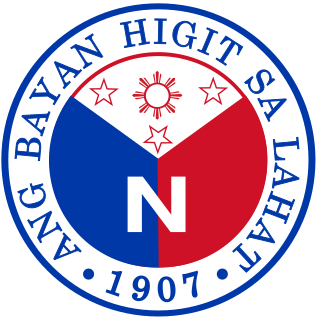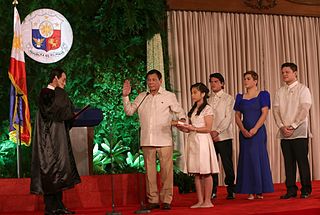
This is a complete list of Vice Presidents of the Philippines by date of death. The earliest to die was Elpidio Quirino on February 29, 1956, while the most recent was Salvador Laurel on January 27, 2004.

The Vice President of the Philippines is the second-highest executive official of the government of the Philippines, after the President. The Vice President currently holds office at the Quezon City Reception House in Quezon City. Previously, the Vice President of the Philippines held office at the Coconut Palace, the Philippine National Bank Financial Center, and the Philippine International Convention Center, all in Pasay, Metro Manila.

Elpídio Rivera Quiríno was a Filipino politician of ethnic Ilocano descent who served as the sixth President of the Philippines from 1948 to 1953.

Salvador Roman Hidalgo Laurel, also known as Doy Laurel, was a Filipino lawyer and politician who served as Vice-President of the Philippines from 1986 to 1992 under President Corazon Aquino and briefly served as Prime Minister from 25 February to 25 March 1986, when the position was abolished. He was a major leader of the United Nationalist Democratic Organization (UNIDO), the political party that helped topple the dictatorship of President Ferdinand Marcos with the 1986 People Power Revolution.
Contents
- Table
- Notes
- Age
- Age at Death
- Deaths by century
- Decade
- Died before their Predecessors
- Died During
- See also
- References
As of July 2019, seven previous Vice Presidents have died, while six, including the incumbent, Leni Robredo, are currently living.

Maria Leonor "Leni" Gerona vda. de Robredo is a Filipina lawyer and social activist who is the 14th and current Vice President of the Philippines. Running under the Liberal Party, Robredo won the vice-presidency contest in the May 9, 2016 election, as confirmed and proclaimed by the official Congressional count of May 25–27, with 14,418,817 votes, narrowly defeating Senator Bongbong Marcos by 263,473 votes amid controversy. She is the second woman to serve as Vice President after Gloria Macapagal Arroyo and the first Vice President from Bicol.













